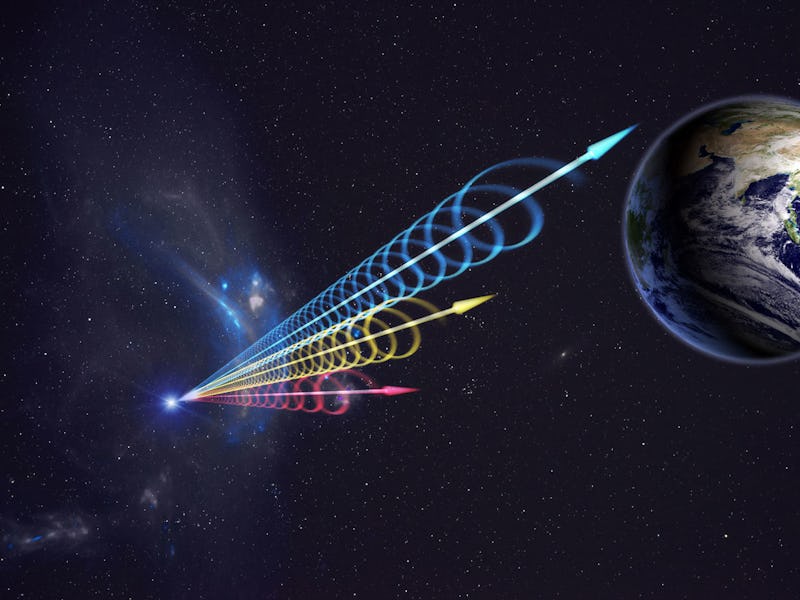Astronomers Solve 'Fast Radio Bursts' Mystery and Disappoint Alien Seekers
The signals had baffled scientists for over a decade, but new clues point to where they might originate from.

When astronomers are studying space, they’re not simply pointing their telescopes toward the darkness of the universe and trying to spot whatever objects are lucky enough to be lit up at the moment. They are also using their ears to listen in on what’s going on — specifically by keeping track of radio waves flying through the vast reaches of space.
A particular form of cosmic radio waves, called fast radio bursts, have eluded scientific explanation since they were first discovered in 2001. These high energy phenomena last only a few milliseconds, and, up till now, no one had any clue where they originated or why they even existed. We’ve only observed 16 of them. Explanations range from aliens (obviously), to radio artifacts of Earth’s own manmade satellite equipment.
Now, we might have a real, evidence-backed explanation. An international team of astronomers sifted through and analyzed 650 hours of archival data from the National Science Foundation’s Green Bank Telescope to determine that FRBs are probably caused by the remnants of a recent supernovas, a galaxy’s central region, or active star-forming nebulae. They presented their findings in the current issue of the journal Nature.
The key to this new discovery was in tracing the origins of a particular FRB, 110523, that possessed a unique property called Faraday Rotation. When a radio wave passes through a magnetized medium, they might be altered in strange ways that can be Knowing that FRB 110523 had moved through a dense magnetic region narrowed the possibilities of where it could have journeyed through. The research team found out FRB 110523 made its way through two different regions of ionized gas before it got to Earth. The high energy of one of these regions was pinpointed to be close to the FRB’s source and about 100,000 thousand light-years away. Leaving us with two possibilities for the source: the interior of a nebula, or a supernova residing near the galactic center.
Poring over such a vast amount of data — about 40 terabytes — requires either a high level of man-power, or some exquisite new time-saving technology. In this case, it’s the latter — a new method of software-based data-mining based on an improved algorithm than can parse through radio wave data faster than ever. The new software highlighted about 6,000 possible FRB signals from the catalogue, which were then individually inspected and whittled down to just one candidate FRB: 110523.
“Taken together, these remarkable data reveal more about an FRB than we have ever seen before and give us important constraints on these mysterious events,” said lead scientist Kiyoshi Masui, an astronomer at the University of British Columbia, in a press release. “We also have an exciting new tool to search through otherwise overwhelming archival data to uncover more examples and get closer to truly understanding their nature.”
While we know from where the FRB came from, it’s still unclear what specific event created it. The possibilities range from pulsar giant pulses, magnetar starquakes, and a black hole formed after a core-collapse supernova. It’s not even totally clear if all FRBs have the same type of source, or if they may in fact be caused by multiple kinds of celestial phenomena. Determining that will require some more study. Don’t worry though — astronomers are keeping their ears open.